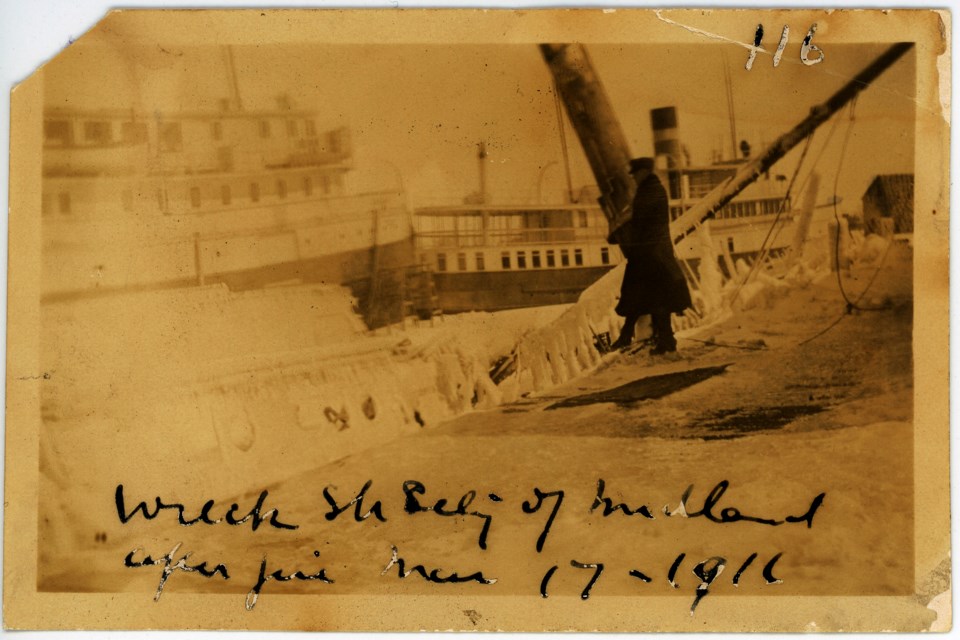In this week’s Remember This feature we return to the early morning fire aboard the City of Midland that emblazoned Collingwood’s skyline on Friday, March 17, 1916. Pictured here, an unknown man observes the hull’s ice-covered ruins where it burned to the water’s edge.
This account of the blaze appeared in The Messenger newspaper the following day:
“About 3 o’clock on Friday (yesterday) morning, fire was discovered on the Steamer City of Midland, owned by the Canada Steamship Lines, and the vessel was completely destroyed, being burned to the water edge.
The work of outfitting had commenced, and boilers were being repaired. The fire apparently originated over the boilers, and the workmen were unable even to save their tools. The Fire Brigade were on hand promptly, but had a cold job with a high wind and zero weather.
Fortunately, the wind was from the north-east and they were enabled to save the Grand Trunk Railway shed alongside which the doomed vessel was lying. The whole aft part of the vessel is destroyed, and it is not likely she will be worth rebuilding.
The City of Midland was the first vessel owned and built by the North Shore Navigation Company (Black Line). She was built at Owen Sound in 1890, and was a vessel 176 feet long and 974 gross tonnage, and was engaged in freight and passenger business between here and the Sault.”
If you have any information about the fire, please contact Collingwood Museum staff.
Remember This is a weekly series of historic photographs submitted by the Collingwood Museum to CollingwoodToday.ca. These photographs were originally collected and documented by the Huron Institute in an historical catalogue entitled Huron Institute Paper and Records: Volume III. Much of Collingwood’s early history has been preserved due to the dedication and foresight of the early museum’s founders, namely its secretary-curator David Williams, upon its establishment in 1904.


